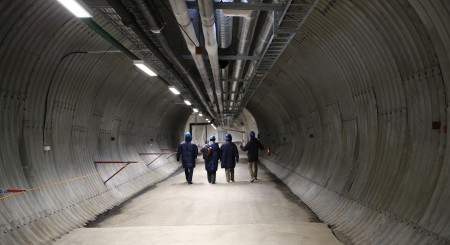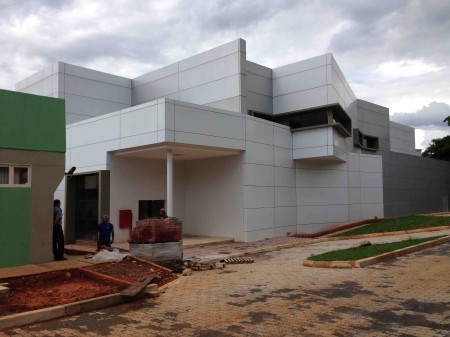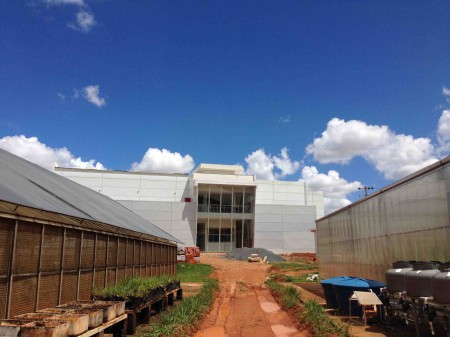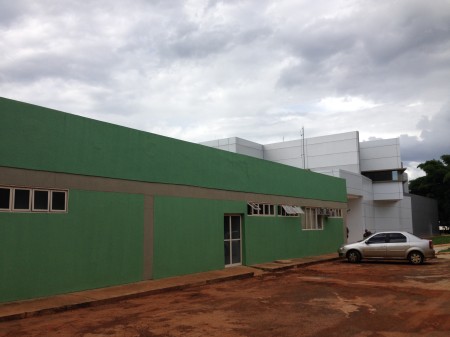The Forests Asia Summit 2014 starts today, with the usual panoply of social media accoutrements. Let’s get #forestasia trending, shall we? The landscape perspective seems to be to the fore, so there should be at least some dialogue with agriculture. You can let us know about it here, if you like.
For the well-being of one and all on the planet Earth
The four largest national collections in the world are located in the USA, Russia, India and China. The National Plant Germplasm System (NPGS) in the USA and the N.I. Vavilov All-Russian Scientific Research Institute of Plant Industry (VIR) in Russia are both in the process of backing-up their collections at Svalbard, while the National Bureau of Plant Genetic Resources (NBPGR) in India has signed the SDA, but has not yet started safety duplication. The Institute of Crop Germplasm Resources (ICGR-CAAS) in China is not participating so far. Out of the five other national institutions with more than 100,000 accessions in storage, the national genebank in Japan is not currently a depositor, whereas the national genebanks in Brazil, Canada, Germany and the Republic of Korea have all deposited seeds at Svalbard. The most significant origin country gap is India… However, safety duplication of the Indian collections is expected in the future…
That’s from a recent PLOS paper “Global Ex-Situ Crop Diversity Conservation and the Svalbard Global Seed Vault: Assessing the Current Status.” And it’s out of date, because the future is now. Though it may be a small step, it’s a significant step, and the message on the box, from which we take our title, says it all.
Embrapa’s new genebank illustrated
If we missed reporting the opening of Embrapa’s new genebank, 1 it’s because the news seems only to have come out in the Brazilian press.
A modern building of over two thousand square feet, divided into two floors, will house one of the largest collections of genetic resources and is the third largest facility in the world in terms of storage capacity. Opened on the morning of April 24, the new genebank started the celebrations of 41 years of Embrapa.
If you search around, you’ll find various photos of the interior of the new building, but I could not find a single one of the outside. So here goes. It was taken a couple of months ago. I expect it’s all tidied up now.
For completeness, the green building in this last shot is the old genebank, which is next door to the new one.
National Geographic and FAO share data and limelight
The next step of National Geographic’s eight-month series on food 2 seems to be to team up with FAO.
From May through December, FAO experts will provide perspective and data for National Geographic’s food coverage, which includes in-depth articles in the magazine each month and additional features on the NatGeoFood.com website. Both organizations will share content and participate in related events to help educate and promote awareness about hunger and nutrition.
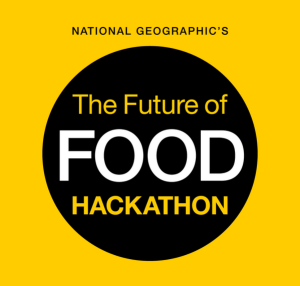 The first such event is a panel discussion today — Food: A Forum — at National Geographic’s headquarters in Washington, D.C. But that’s not all:
The first such event is a panel discussion today — Food: A Forum — at National Geographic’s headquarters in Washington, D.C. But that’s not all:
The panel discussion will be followed by a two-day Future of Food Hackathon May 3 and 4, during which scientists, data journalists and programmers will develop apps and tools to address solutions for feeding the planet by exploring broad FAO data sets that shed light on food distribution, transportation, costs and environmental legacy over the last 50 years.
Will they talk to Colin Khoury of CIAT, whose recent paper on the globalization of diets was based on FAO data? 3 Would be interesting to know whether NatGeo’s plans for its food series include a bit more collaboration with CGIAR — that is, people like Colin — than the admittedly impressive photo essay on Finding the Faces of Farmers. Finding the Faces of CGIAR Genebankers, anyone?
Ecuador puts its money where its chocolate is
Tweets emerging from the workshop on Climate Change and the Cocoa Industry: Leveraging Science and Technology for Sustainability at the Belfer Center last night suggest that there’s something of a revolution brewing in cacao research:
#Ecuador to create world's first #cocoa and #chocolate university http://t.co/fUiNXbAFoU http://t.co/lwMp74Kewh
— Calestous Juma (@calestous) April 30, 2014
Theobroma, wild and cultivated, has played and important part in the country’s history and economic development. And the diversity of the crop has been said to be threatened, despite largish collections. So it probably does make financial sense to invest in cacao research. The devil will be in the details. One to watch.
